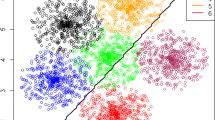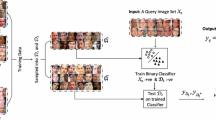Abstract
We describe a novel extension to the Class-Cover-Catch-Digraph (CCCD) classifier, specifically tuned to detection problems. These are two-class classification problems where the natural priors on the classes are skewed by several orders of magnitude. The emphasis of the proposed techniques is in computationally efficient classification for real-time applications. Our principal contribution consists of two boosted classi- fiers built upon the CCCD structure, one in the form of a sequential decision process and the other in the form of a tree. Both of these classifiers achieve performances comparable to that of the original CCCD classifiers, but at drastically reduced computational expense. An analysis of classification performance and computational cost is performed using data from a face detection application. Comparisons are provided with Support Vector Machines (SVM) and reduced SVMs. These comparisons show that while some SVMs may achieve higher classification performance, their computational burden can be so high as to make them unusable in real-time applications. On the other hand, the proposed classifiers combine high detection performance with extremely fast classification.
Similar content being viewed by others
Author information
Authors and Affiliations
Rights and permissions
About this article
Cite this article
Eveland, C., Socolinsky, D., Priebe, C. et al. A Hierarchical Methodology for Class Detection Problems with Skewed Priors. Journal of Classification 22, 17–48 (2005). https://doi.org/10.1007/s00357-005-0004-9
Issue Date:
DOI: https://doi.org/10.1007/s00357-005-0004-9




